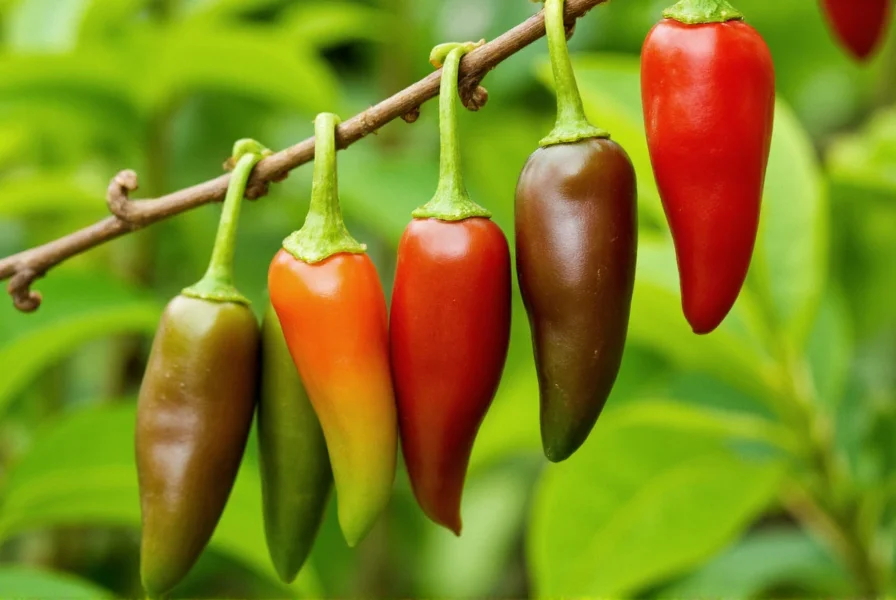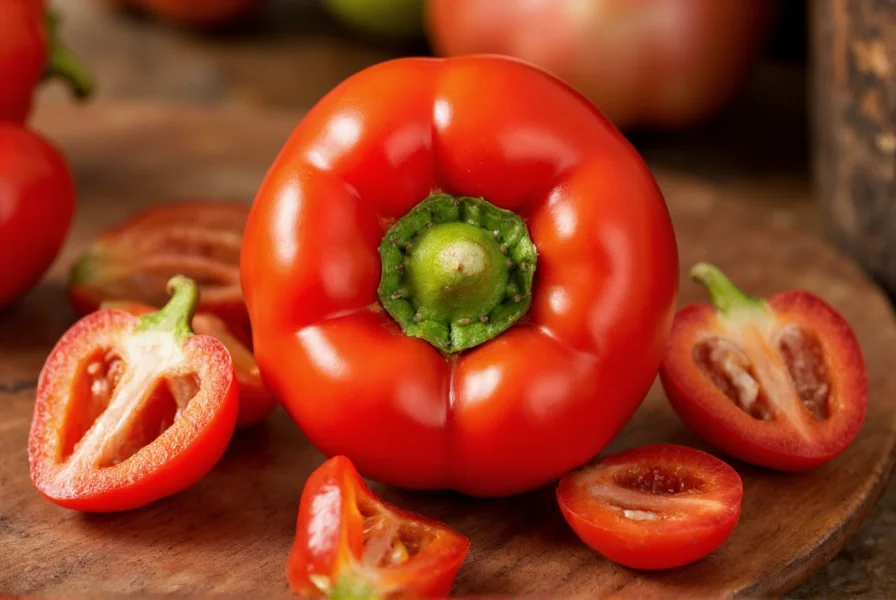Hatch peppers represent one of America's most distinctive regional food specialties, originating from the fertile valley surrounding the town of Hatch in southern New Mexico. These chile peppers have earned geographical indication status, meaning authentic Hatch peppers can only come from this specific growing region along the Rio Grande river valley.
Origin and History of Hatch Chile Peppers
The story of Hatch peppers begins with Native American cultivation of chile peppers in New Mexico dating back over 500 years. Modern Hatch varieties were developed through careful breeding at New Mexico State University's Chile Pepper Institute, with the goal of creating peppers perfectly adapted to the region's unique high-desert climate and soil conditions.
The town of Hatch, New Mexico, officially designated as the "Chile Capital of the World," hosts an annual Chile Festival every September that draws thousands of visitors. This celebration marks the peak of harvest season when fields throughout the valley yield their distinctive crop.
Understanding Hatch Pepper Varieties and Heat Levels
Hatch peppers aren't a single variety but rather encompass several specific cultivars grown in the region. The heat level varies significantly depending on the particular variety and growing conditions:
| Hatch Variety | Heat Level (Scoville Units) | Flavor Profile | Best Culinary Uses |
|---|---|---|---|
| Hatch Big Jim | 500-1,500 | Mild, earthy, slightly sweet | Stuffed peppers, roasting, sauces |
| Hatch Sandia | 1,500-5,000 | Bright, tangy, moderately hot | Salsas, pickling, drying |
| Hatch Española | 1,000-2,500 | Complex, fruity, medium heat | Chile rellenos, sauces, roasting |
| Hatch Lumbre | 5,000-10,000 | Smoky, intense heat | Hot sauces, specialty dishes |
The Scoville scale measurements above demonstrate why understanding different types of Hatch peppers matters for home cooks. Unlike mass-produced jalapeños that maintain consistent heat, Hatch peppers' spiciness varies naturally based on sun exposure, soil conditions, and water availability during growth.

How Hatch Peppers Compare to Similar Varieties
Many people confuse Hatch peppers with other common chile varieties. Understanding these distinctions helps when substituting in recipes:
- Hatch vs. Anaheim: While often used interchangeably, true Hatch peppers have more complex flavor and slightly higher heat than standard Anaheim peppers, which are grown in California.
- Hatch vs. Poblano: Poblanos are larger, heart-shaped peppers with a milder heat profile. When dried, poblanos become ancho chiles, while Hatch peppers are typically used fresh or roasted.
- Hatch vs. Jalapeño: Jalapeños are smaller, rounder, and consistently hotter than mild-to-medium Hatch varieties, with a sharper, more immediate heat.
Culinary Applications of Hatch Chile Peppers
The unique flavor profile of Hatch peppers makes them incredibly versatile in the kitchen. Their signature taste emerges most prominently when roasted—a process that transforms their flavor through caramelization of natural sugars while softening the skin for easy removal.
Professional chefs and home cooks alike prize fresh Hatch chile pepper season for creating authentic Southwestern dishes. The roasting process, traditionally done over open flames, develops complex smoky notes that distinguish Hatch peppers from other varieties.
Popular culinary applications include:
- Chile Rellenos—stuffed roasted peppers, typically with cheese
- Green Chile Stew—a New Mexican comfort food classic
- Sauces and Salsas—from mild table sauces to fiery hot varieties
- Roasted Pepper Quesadillas—simple preparation highlighting the pepper's flavor
- Chile-infused Oils and Vinegars—for adding subtle heat to dishes

Seasonality and Availability of Authentic Hatch Peppers
True Hatch peppers have a limited harvest season, typically running from late August through early October. This narrow window creates what's known as Hatch chile season, when farmers markets and grocery stores throughout the Southwest prominently feature the fresh crop.
Outside of harvest season, you'll find:
- Frozen roasted Hatch peppers (best alternative to fresh)
- Canned green chile (check labels for "Hatch" designation)
- Dried Hatch peppers (less common than other dried varieties)
- Hatch pepper powder and sauces (varying quality)
When purchasing, look for the Hatch Chile Official Seal which authenticates that the product contains peppers grown in the Hatch Valley region. Many products labeled "Hatch style" or "inspired by Hatch" may not contain actual Hatch-grown peppers.
Proper Storage and Preparation Techniques
To maximize flavor and shelf life of fresh Hatch peppers:
- Refrigeration: Store unwashed peppers in the crisper drawer for up to 3 weeks
- Freezing: Roast, peel, and freeze in airtight containers for year-round use
- Drying: String peppers and hang in a warm, dry place for traditional ristra decoration and storage
- Roasting technique: Char over open flame, gas stove, or broiler, then steam in paper bag before peeling
When handling hotter varieties, consider wearing gloves to prevent capsaicin oil from irritating your skin or eyes. Always wash hands thoroughly after handling hot peppers, and avoid touching your face during preparation.
Frequently Asked Questions About Hatch Peppers
What makes a Hatch pepper different from other green chiles?
Hatch peppers are distinguished by their specific growing region in New Mexico's Hatch Valley, which imparts unique flavor characteristics due to the area's soil composition, altitude, and climate. While often compared to Anaheim peppers, authentic Hatch varieties typically have more complex flavor profiles with earthy, smoky notes and varying heat levels depending on the specific cultivar.
When is Hatch chile season and why is it limited?
Authentic Hatch chile season runs from late August through early October when peppers are harvested at peak ripeness in the Hatch Valley of New Mexico. The season is limited due to the specific climate requirements for growing these peppers—they need New Mexico's high-desert conditions with intense sunlight, cool nights, and the unique mineral-rich soil of the Rio Grande valley.
How do I know if I'm buying authentic Hatch peppers?
Look for the official Hatch Chile seal on packaging, which authenticates that the peppers were grown in the Hatch Valley region of New Mexico. During harvest season (August-October), fresh peppers labeled as "Hatch" at farmers markets and grocery stores are most likely authentic. Be cautious of products labeled "Hatch style" or "inspired by Hatch" which may not contain actual Hatch-grown peppers.
What's the best way to roast Hatch peppers at home?
The traditional method involves placing whole peppers directly over an open flame (gas stove or grill) until the skin is evenly charred. Rotate frequently for even charring. Once blackened, place peppers in a paper bag or covered bowl for 10-15 minutes to steam, which loosens the skin. Then peel under running water, remove seeds and membranes, and slice as needed for your recipe.
Can I substitute other peppers for Hatch in recipes?
Yes, but with flavor considerations. For mild recipes, Anaheim peppers make the closest substitute. For medium heat, try poblano peppers. For hotter applications, consider combining jalapeños with a bit of bell pepper to approximate the complex flavor profile. Remember that roasting any substitute pepper will help mimic the distinctive smoky flavor of roasted Hatch peppers.











 浙公网安备
33010002000092号
浙公网安备
33010002000092号 浙B2-20120091-4
浙B2-20120091-4